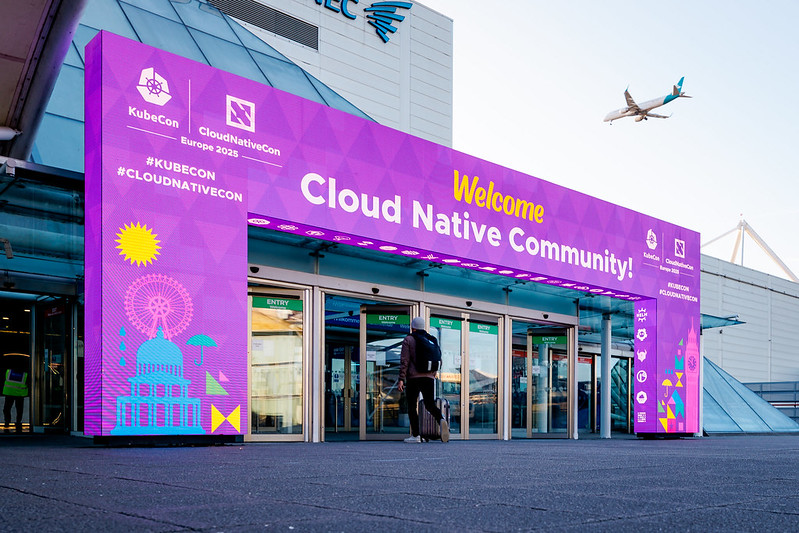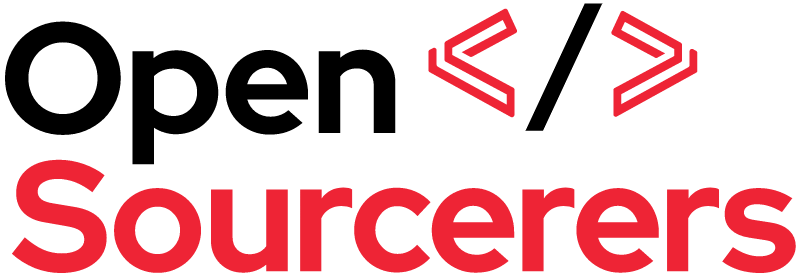
(Picture by cncf https://www.flickr.com/photos/143247548@N03/54435998240/in/album-72177720324566471 cc-by-nc 2.0)
Introduction
KubeCon + CloudNativeCon Europe 2025, the flagship conference of the Cloud Native Computing Foundation (CNCF), was at ExCeL London from April 1 to 4, 2025. This premier event has drawn adopters and technologists from leading open-source and cloud-native communities to collaborate on the future of cloud-native computing. The conference featured a robust agenda with 229 sessions, including keynotes, lightning talks, and breakout discussions. Notably, close to a hundred sessions were hosted by CNCF project maintainers, reflecting the depth of expertise present. Attendees have the opportunity to engage in CNCF-hosted co-located events such as ArgoCon, BackstageCon, and CiliumCon, offering deep dives into specialized topics within the cloud-native ecosystem.
Topics
As you walk around on the KubeCon beside all the talks and exchange possibilities, you can see a lot of different booths. I tried to just look around and grasp the different topics and personally identified four main ones.
Observability
One of the wide-spread topics was Observability. This is the practice of gathering and combining metrics, logs and traces to gain insights into how your applications and clusters behave. Obviously this is a critical requirement to optimize your workload, your costs and also your clusters. As Kubernetes is per-se a distributed system and applications get distributed across one or more clusters, this is a critical, complex and complicated topic for all users. With the current push towards the OpenTelemetry project, a lot of standardization around the project is happening.
Simplicity
Of course as always, the topic of doing “more with less” was omnipresent. But so was the topic of simplicity. Many Talks/Booths/People see Kubernetes as something which has a lot of complexity, a steep learning curve and try to reduce the complexity. Some pour AI chat-prompts in front of kubernetes – which of course adds a new layer and may reduce complexity in the interface but also reduce the ability to debug stuff, and the skills necessary for that.
Security
Another topic was Security. Be it Infisical with their password-management solution, Hashicorp or CNCF-projects like kubewarden, in-toto or therelike. A lot of Booths had at least an additional topic on security. The reason for this might be the rising awareness of the security challenges which are created by the complexities of modern IT-Solutions and the vast ecosystem that the CNCF provides. Some of the booths preferred to only “scare” people about security with slogans and skulls, but then provided only Swag, but no Solutions.
AI
Of course, like everything after ChatGPT, AI was present as well. Some only used AI as a mechanism for showcasing their technology in a new context. Or if you assume bad faith, have AI in the title of their demo to attract more listeners. One example for me was the HAProxy Talk, where they showcased how you could utilize HA Proxy SPOA Stream Processing Offloading Engine (and ask me why it has an A), to analyse for PII, amount of tokens and other AI-relevant variables. Of course this capability can be used in a lot of other ways too, and I bet it has been, as the capability is in HAProxy since Version 1.7 back in 2016. I am not quite sure if this is always necessary, but this may help to implement useful technology by utilizing the AI hype, until the next Hype-Cycle begins ;-).
In some cases, AI-Agents were used as an User-Interface to Kubernetes. “Chat-with-your-Cluster” like. While I personally see productivity benefits by using GenAI to create templates or some boiler-yaml for my Demo-Apps, it was painful to see someone typing
“Show me all Pods in the Namspace demo-app. Do not change anything to them yet.” Code language: PHP (php)instead of
“kubectl get pods -n demo-app” Code language: JavaScript (javascript)which is shorter and provides a higher safety around changes. I mean… how much do I trust the agent, if I have to fence the actions in my prompt? Also the needed privileges pose other issues and hallucinations are a risk you also need to mitigate. There might be cases where this is helpful, but for this, you still need someone who knows what he is doing, who can assess the risk of the actions of the AI-Agent possible hallucinations and the AI-Agent needs to interprete all of the context, that the Kubernetes-Admin is not able to grasp or tries to understand.
Booths
Companies creating products around CNCF
Of course the top-dogs of CNCF Ecosystem based Vendors were present. Red Hat, VMware, SUSE, Hyperscalers like Google, Microsoft Azure and AWS also. I really liked that a lot of these showed demos of working solutions and made their products more understandable due to that. Only a few booths focussed only on swag and slogans without much content.
CNCF-Project Booths
Of course all of the CNCF Booths were there. Harbor, ArgoCD, in-toto, … Some of them were only there for a specific timeframe and swapped with other projects on the next day. They were a great possibility to connect with the maintainers, discuss some issues and the further roadmap of the project.
Employers
What was personally surprising to me, was the last category of Booths. Companies which I personally would not have expected at KubeCon. Companies like E.on (a Germany based multinational electricity company) and Monzo, an online Bank based in the UK. Both of these companies are of course no big players in the CNCF Ecosystem (as far as I know). But they were there to hire new talents and be more visible in the community in the battle for talents. These shows in which broad industrial spectrum the CNCF technologies are used and how important it is to get the people who can support these technologies.
People
Of course the community of people is a central part of the Event. I was able to meet people I worked with in OpenSource-Projects for the first time in-person. Met people I worked with in business-related activities and met new interesting people. Although most of the crowd was IT-related male, there were spaces like the DEI Community-Room where minorities were able to communicate their topics. The most impressive thing for me was the Sign Language Crash Course of the CNCF Deaf + Hearing Impaired Working Group where I learned a couple of signs of the American Sign Language. It was one of the many ways which helped change perspective.
Summary
For me it was the first KubeCon. It was interesting, exhausting and very informative. The mix of Talks from vendors and maintainers. The mix of booths and the people made the KubeCon an exciting place to learn, connect and have a great event to remember.
